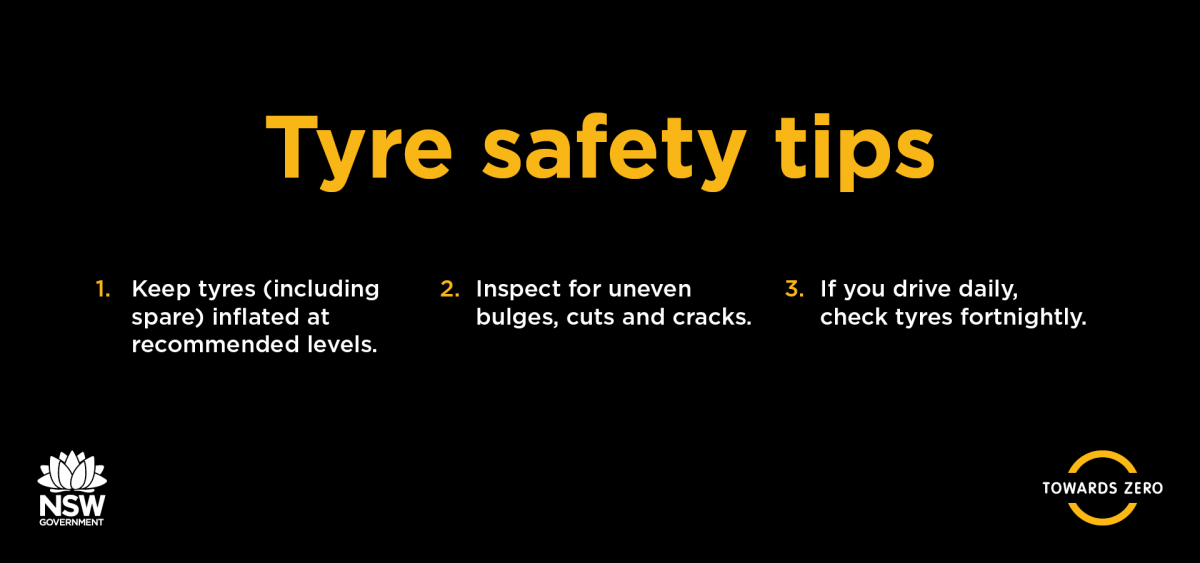Well maintained tyres are a vital part of your vehicles safety

As the point of contact with the road, well maintained tyres are a vital part of vehicle safety. Worn or damaged tyres can severely compromise braking distances and handling, increasing the risk of a crash. If you drive your vehicle daily, check the tyres fortnightly. Our tyre safety tips provide practical advice:
- Keep tyres (including the spare) inflated to the recommended levels. Too much or too little air causes uneven wear, reduces handling and grip, and shortens the life of the tyres.
- Inspect for uneven bulges, cuts and cracks. Remove any objects lodged in the tread and check for gouges or punctures.
- Tyres should be replaced before the tread depth falls to 1.5mm. Most tyres have tread depth indicators as a guide
- A tyre that loses too much pressure in a short time may have a slow leak and should be repaired or replaced
- Unusual vibrations or uneven wear (bald) spots on tyres may suggest that a wheel balance is needed to avoid excessive loading to the vehicle’s wheel bearings and suspension
- Do not attempt to change a flat tyre unless it is safe to do so. If possible, drive on a flat tyre to a safe spot away from traffic.
Alignment
Wheel alignments correct the angle of wheels to the axle and steering components to avoid steering problems and uneven tyre wear. Wheels should be aligned about once a year, or sooner if you can feel vibrations through the steering wheel.
Tyre age
It is important to know the age of tyres, especially when buying second-hand vehicles. Most tyres have date markings and those older than five years, even with little wear, may need to be replaced, as rubber materials deteriorate over time.
